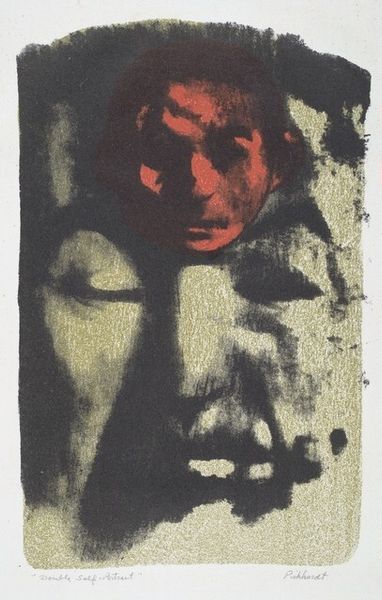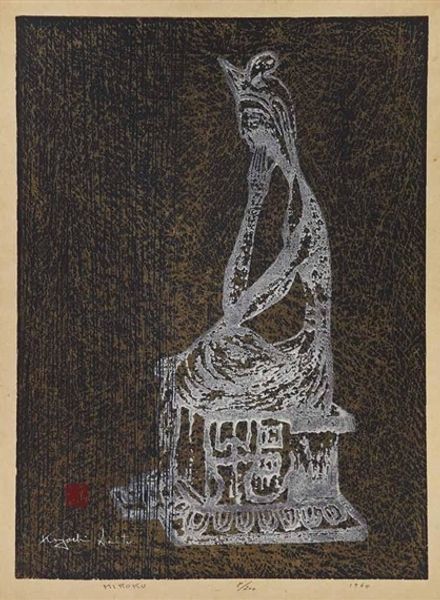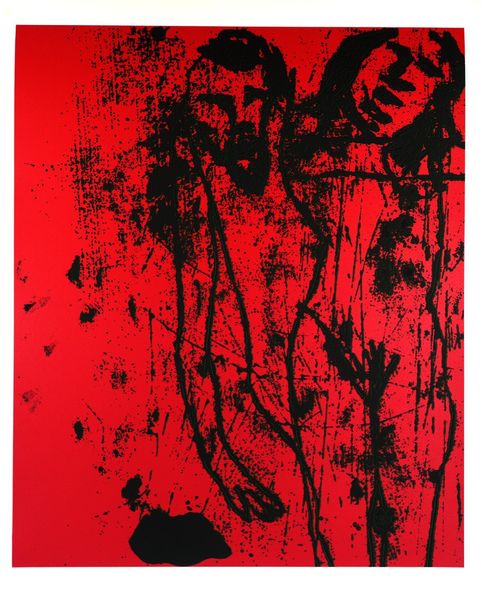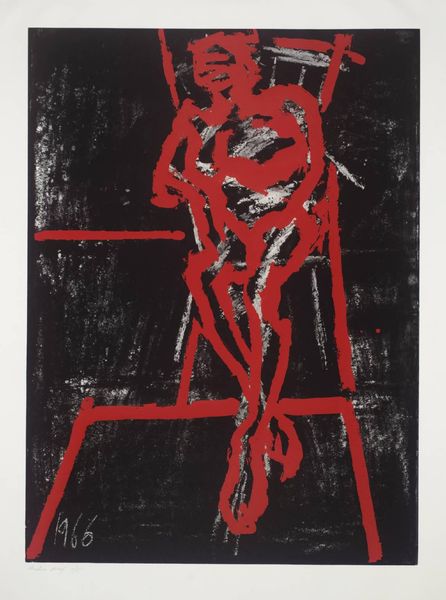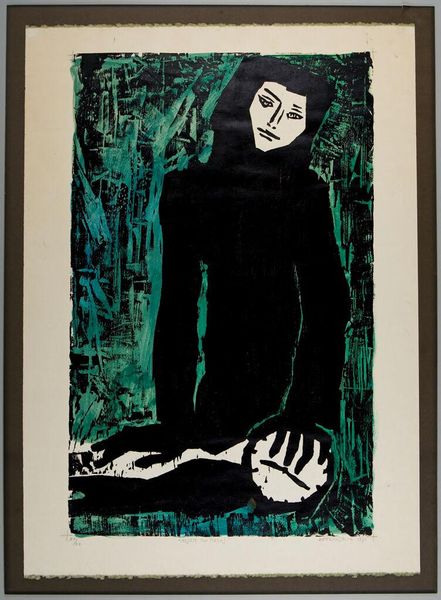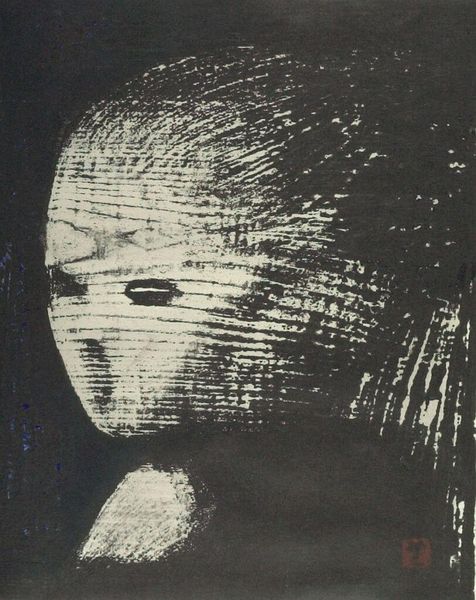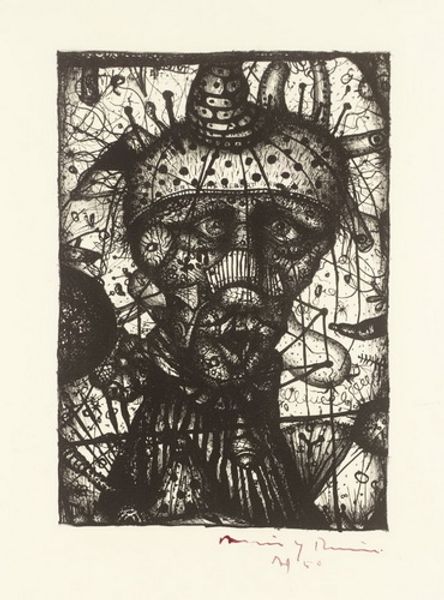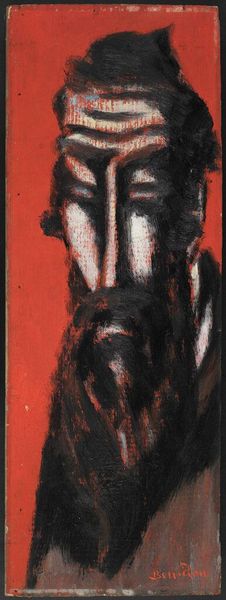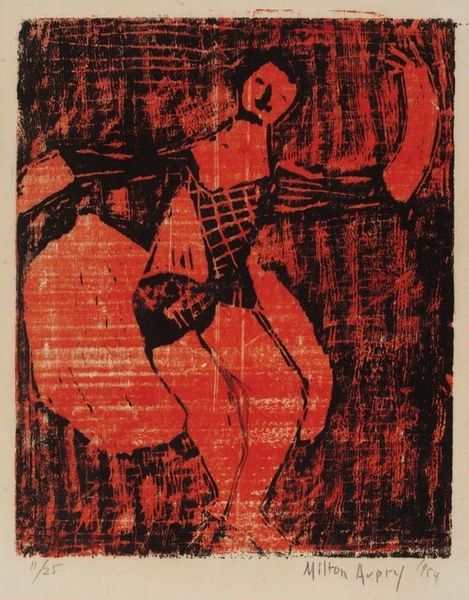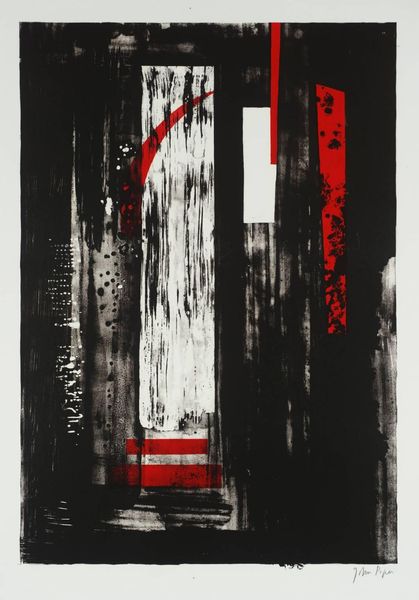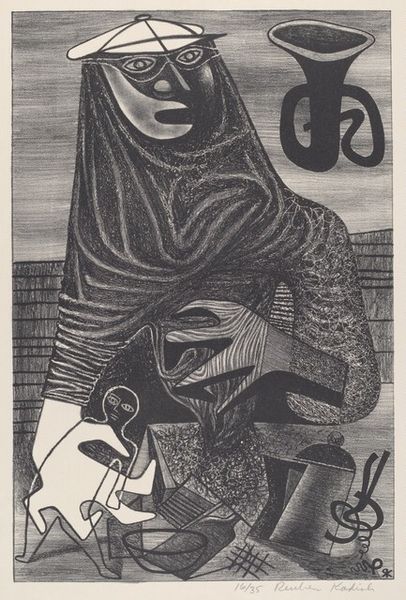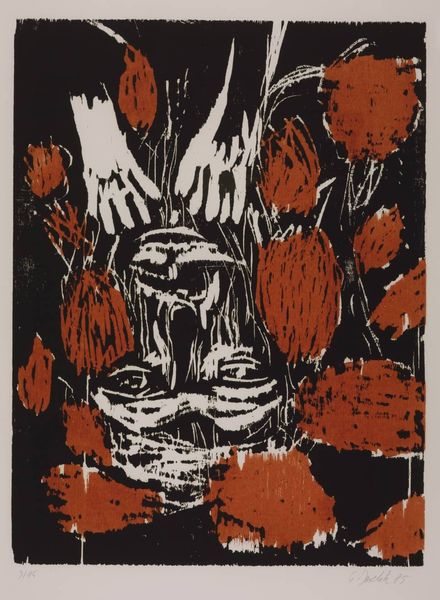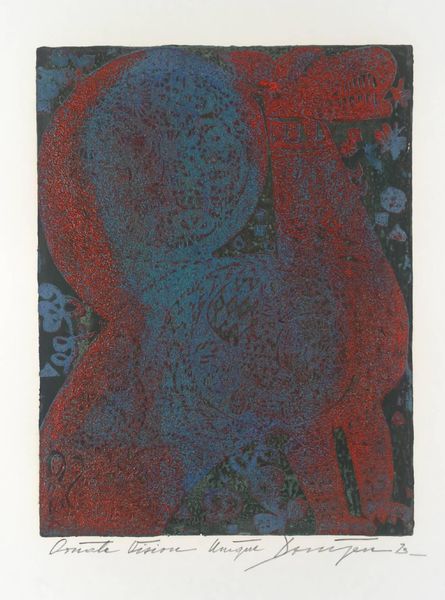
Copyright: Public domain Japan
Editor: This is "Dream" by Kaoru Kawano, a woodcut print from 1950. I’m immediately struck by its bold red and black color palette, and how the face almost seems to fade into the background, despite being the focal point. How do you see this piece within the context of postwar Japanese printmaking? Curator: That's a keen observation. Looking at it through a historical lens, we can see "Dream" as part of the Sosaku-hanga movement, which emphasized the artist's complete control over the printmaking process. After the devastation of World War II, there was a surge in artistic expression reflecting a need for rebuilding cultural identity. Editor: So, how did social context inform this work? Curator: Think about the ukiyo-e tradition, the earlier woodblock prints depicting idealized versions of life. How does Kawano's work either challenge or build upon this tradition? Consider the figure’s introspective gaze, so different from the geishas or kabuki actors that dominate earlier prints. Also, notice that the intense colours serve as strong statements to symbolize resilience and strength in times of crisis. Do you notice the way the bold red envelops the figure? What meaning does that have in postwar society? Editor: I see what you mean, it almost creates a sense of protective armour around the individual, but there is an element of the subject trying to shield itself from reality. I suppose I had been focusing on its aesthetics and missing the historical background. I’m beginning to understand the shift towards self-reflection after such societal upheaval, thanks to your explanations. Curator: Precisely. And understanding this interplay between art and socio-political events deepens our appreciation, showing us that images carry complex stories and that public reception of art matters.
Comments
No comments
Be the first to comment and join the conversation on the ultimate creative platform.
